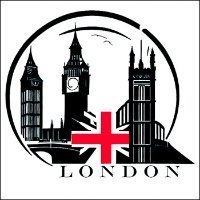Hard Water to Soft Water
-
Recently Browsing 0 members
- No registered users viewing this page.
-
Topics
-
-
Popular Contributors
-
-
Latest posts...
-
72
-
2
Hungry? No it's about HUNGARY.
Europe has the GDP to arm up and beat Russia to a pulp. But, will they do it? -
0
Crime Foreign Nationals Arrested for Selling “Laughing Gas”
Picture courtesy of Khaosod. Authorities have arrested two individuals for illegally selling nitrous oxide, commonly known as “laughing gas,” to teenagers and Chinese tourists through online platforms, seizing a significant quantity of the substance. Police Lieutenant General Thasphoom Jarupratch, head of the Economic Crime Division (ECD), instructed Senior Police Officers Narupon Karuna and Patipan Bensuk to carry out the operation. The suspects are Mr. Yu, a 30-year-old Chinese national and Ms. Tran Thi, a 31-year-old Vietnamese national. Mr. Yu was apprehended at a parking lot near a synthetic football pitch in Jomphol, Chatuchak District, Bangkok, with 50 canisters of nitrous oxide in his possession. Ms. Tran Thi was arrested at her condominium in Huaykwang District with 12 canisters. Investigations revealed that Mr. Yu had been distributing the gas to young customers and Chinese tourists via social media, which they inhaled for recreational purposes. Authorities observed him delivering the canisters to clients before taking action. Further investigation identified Ms. Tran Thi as another key figure in the network. Court approval was obtained to search her condominium, resulting in her arrest and seizure of additional canisters. During questioning, Mr. Yu admitted he was employed solely to deliver the nitrous oxide on the orders of his employer via the Telegram messaging app. Ms. Tran Thi claimed the canisters found at her residence were for personal use and not intended for sale, a statement authorities are treating with caution. Both suspects have been handed over to investigators at the ECD for prosecution under the Narcotics Act, specifically for the “unauthorised sale of drugs.” Adapted by Asean Now from Khaosod 2025-08-24 -
7
Sunglasses
I don’t go out in the daytime with out mine. I see Thai’s wearing them also. Hardest part is deciding which pair to wear. Gucci, Vuitton, Salt or Versace. My cheap pair is Maui Jim. All original, no knockoffs for this dude. Yes, I’ve lost many over the years or smashed accidentally. Yes, I keep going back to the originals. Because I can. -
77
Thais are supposedly peaceful people, but why not on the roads?
What the heck were you doing there? Complaining about the Tutsi on the local CentralAfricaNow forum under the pseudonym Bob Ilunga... -
28
THAILAND LIVE Thailand Live Sunday 24 August 2025
South Korean Arrested for Laundering Cryptocurrency into Gold Picture courtesy of CH7. Authorities have arrested, on 23 August, a 33-year-old South Korean national, Mr Han, at Suvarnabhumi Airport for allegedly laundering cryptocurrency into gold bars on behalf of an international call centre scam operation. Full story:https://aseannow.com/topic/1370771-south-korean-arrested-for-laundering-cryptocurrency-into-gold/
-
-
Popular in The Pub









Recommended Posts
Create an account or sign in to comment
You need to be a member in order to leave a comment
Create an account
Sign up for a new account in our community. It's easy!
Register a new accountSign in
Already have an account? Sign in here.
Sign In Now